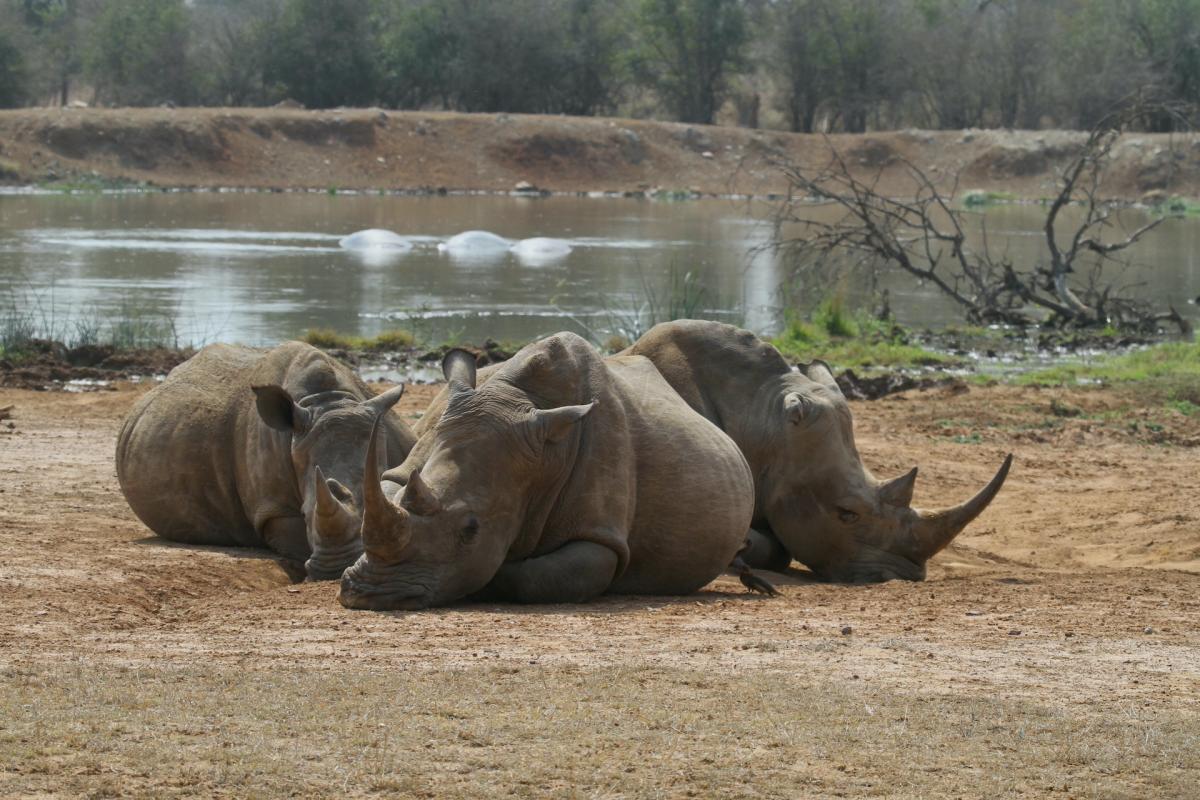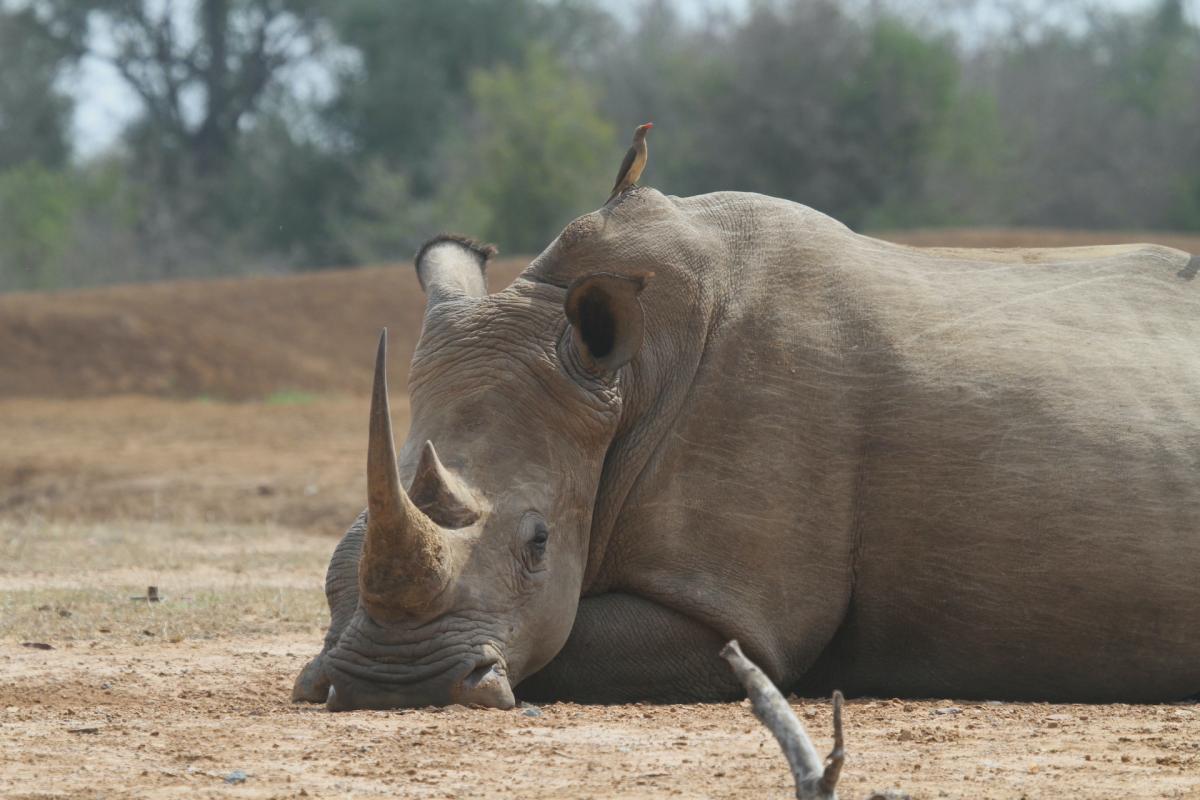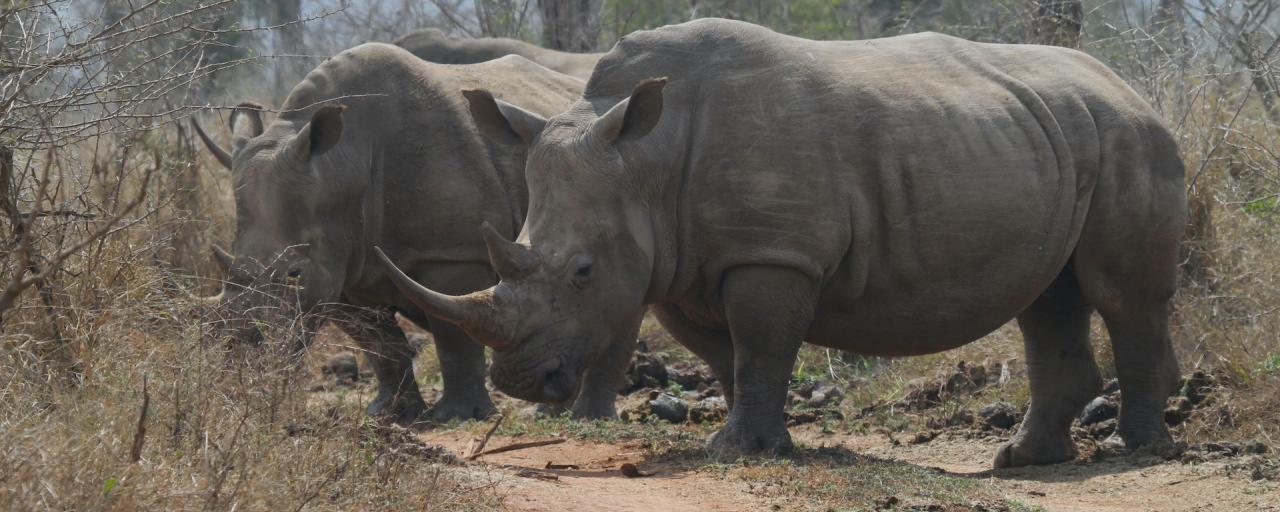The Hlane Royal National Park is located in Eswatini, or Swaziland, and was proclaimed a national park in 1967 by King Sobhuza II; today it represents the largest protected area in the country.
The name Hlane in the Swati language means wilderness or wild nature and makes the park's goal very well, namely the conservation of nature both from the point of view of the territory and the animals that inhabit it.
The Royal National Park of Hlane covers an area of 220 sq km and, if the buffer areas that are close to the park are added to this, the protected area becomes 330 sq km.
The wonderful Hlane Royal National Park is located in Eastern Eswatini, at an altitude ranging from 210m to 330m above sea level and this makes it classified as lowveld; the Hlane has a high biodiversity and very different landscapes.
The different types of soil present within the territory of the Hlane determine the types of vegetation that are consequently very diversified:
- the plains of Hlane and the temperate climate support an open savannah biome interspersed with areas characterized by the presence of bushes and dry rainforest patches, dominated by Acacia nigrescens or Knob Thorn;
- the narrow strips of deciduous and semi-deciduous forests that follow the drainage lines along the basaltic ridges and at the foot of the Lebombo mountains;
- rivers and streams along whose courses there are abundant species of tall trees such as ficus, fuchsia trees or Schotia brachypetala, mahogany or mahogany trees and Combretum imberbe or leadwood;
- the river woods along the Mbuluzi river dominated by the wild palm or Phoenix reclinata, by Euclea crispa and by Nuxia or false olive tree.
The Royal National Park of Hlane therefore presents a varied flora, with small-leaved and broad-leaved trees; these arboreal species allow the survival of the numerous animal species present in the territory of the protected area.
Among all the tree species present, one plant in particular is considered important: the Acacia nigrescens; this species of acacia dominates the flat lands of the savannah, it is the tree preferred by birds for nesting, including several species of birds of prey as it is an extremely resistant tree.
Elephants are particularly fond of the Acacia nigrescens and feed on practically the whole tree, from leaves to branches and bark.
The bark is torn off the trunk by elephants to be able to eat it and in this way the tree, no longer protected, dies, but, despite being dead, the tree remains erect thanks to its wood that is very resistant.
The current bird nesting areas have been protected in parts of the Royal Hlane National Park to prevent elephants from destroying the plants where these birds usually make their nests.
These areas were also closed to elephants to protect and preserve the biodiversity of the national park from excessive deforestation.
In the areas currently reserved for elephants, in fact, the trees have drastically reduced, transforming these areas into grassy meadows, followed by a change in the species of birds that can be found here compared to the wooded areas that have instead been preserved.
The area of the current Hlane National Park was once one of the hunting grounds of the royal family of Swaziland; the observation point called Hunter's Rock is the place from where King Sobhuza II, the father of the current king of Eswatini, saw the last lion of the kingdom.
Today the Hlane is home to two herds of lions that have been reintroduced to increase the biodiversity of the park but above all because they represent one of the symbols of the Eswatini Kingdom.
The park boasts a high biodiversity, in addition to lions you can see elephants, white rhinos, giraffes, hyenas, jackals, zebras, wildebeests, kudus, leopards, hippos and numerous other species of antelope, as well as a rich bird life and numerous reptiles.
There are also many species of reptiles, in particular snakes, in addition there are numerous lizards, two species of turtle and the Nile crocodile.
At the Hlane there are also numerous species of arthropods, both insects and arachnids are present in large numbers, providing an incredible source of food for other species of animals, first of all birds.
250 species of birds have been recorded in the park, with one of the largest populations of Eswatini raptors, including the juggling falcon or bateleur, the martial eagle and five vulture species.
At the Hlane National Park there is the highest density of nesting vultures in Southern Africa, in particular the white-backed vulture and the Cape vulture, both species are at risk of extinction; the large number of vultures is due to the presence of numerous plants of acacia nigrescens, a tree favored by vultures for nesting.
The park is also the ideal habitat for water-dependent bird species, particularly in the wetlands along the rivers and near the Mahlindza dam, these areas are an important stopping and moulting point for migratory water birds.
The Hlane Royal National Park protects the Southernmost colony of marabou storks and also the red billed oxpecker, a species that has become extinct in much of Swaziland since the 1980s and it is rare in South Africa; but present at the Hlane with numerous specimens.

The three zones into which the Royal National Park of Hlane is divided
- The central part of the park is the most visited section and it is where the white rhinos and elephants are found; in this area it is possible to go on a safari with the park guides or independently. Here there is also one of the two lodges inside the Hlane: the Ndlovu Camp where, in addition to the accommodation and the campsite, there is a restaurant, a souvenir shop, the reception and a view of a pool where it is often possible to see whites rhinos.
- The part reserved for lions, this part can only be visited by participating in a safari with the guides; elephants have also been placed in this area.
- The third area is also the largest, here there are several species of antelope and the nesting points of various bird species, including the Southernmost nesting area of the marabou stork. Here there is also an observation hut that overlooks a pool where you can see the animals without disturbing them, and this is also where Hunter's Rock is located; finally here is the Bhubesi Camp, a series of self catering cottages.
Activities in which you can participate at the Hlane Royal National Park
There are several activities that can be done here at the Hlane Royal National Park:
- safari or game drive: it is possible to explore the park independently with your own vehicle, thanks to a good network of roads that winds between the savannah and the deciduous forests, with the exception of the lion sector where, in order to enter, you need to participate in a guided safari with the park rangers;
- walking safaris: walking safaris allow a close approach with rhinos and other animals, in particular antelopes, birds and insects;
- mountain bike and quad excursions;
- cultural visits to a village near the Hlane park;
- hiking: routes ranging from 2 hours to 2 days along the Ehlatsini Bush Trails; for the two-day itinerary, overnight accommodation in a tent in a mobile camp is provided.
The accommodations found within the Hlane Royal National Park
The Ndlovu Camp at the Hlane Royal National Park
The Ndlovu Camp at the Hlane Royal National Park is located not far from the main entrance; the camp overlooks a pool of water, that attracts numerous animals including white rhinos, elephants and giraffes.
The Ndlovu Camp is the central point of the park, here is the reception and the office where you can book activities; all the excursions start from here and here is the only restaurant and the only shop that sells souvenirs, crafts, technical clothing, books and other items.
For overnight stays, you can opt for the large campsite, equipped with shared kitchens and bathrooms, or for one of the rondavels, cottages with thatched roofs equipped with all comforts, there is also a rondavels for large groups.
The camp is without electricity and in the evening the lanterns that illuminate it create a romantic and relaxed atmosphere.
The fantastic open-air restaurant and the nearby bar terrace are an excellent vantage point to admire the animals coming to the waterhole to drink; it is the ideal place to relax while waiting to leave for the safari or for lunch and you can easily spot an elephant or a rhino wandering around the waterhole.
Bhubesi Camp
The Bhubesi Camp is located in the North-Western area of the Hlane and can be easily reached by following the internal roads of the park; the Bhubesi Camp overlooks the Umbuluzana river with its reeds and dense river vegetation.
At the Bhubesi Camp there are six independent cottages built in stone and equipped with all comforts, including electricity and located in a pristine river environment.
The Hlane Royal National Park is open from 06:00 am to 06:00 pm, day visitors must leave the main entrance on time, and access to the camp is not allowed after closing time.



